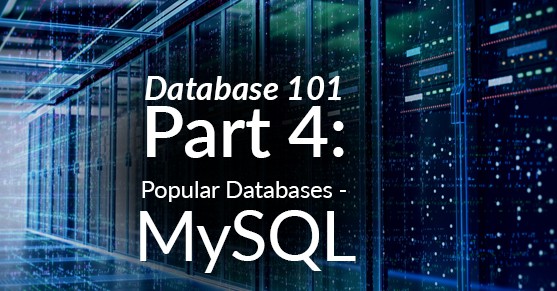For more than two decades, MySQL has been a staple of the open-source database community. As a brainchild of the database greats, David Axmark, and Michael Widenius, MySQL has been a prominent database choice for millions of users since the mid-90s.
MySQL is a free Relational Database Management System (RDBMS) initially developed by MySQL AB and currently developed by the Oracle Corporation. Under the terms of the GNU General Public License, MySQL is an open source software with optional proprietary licensing available (Enterprise Server). The database is a part of the original LAMP software stack (Linux, Apache, MySQL, and Perl/PHP/Python) and used by almost 130,000 companies across the globe, making it “the world’s most popular open-source database.”
MySQL is generally offered for deployment as a binary package (more easily done in Linux systems than others), but MySQL’s simple source code can be used for installation on a variety of systems. The software can be quickly installed with little effort on a plethora of different operating systems.
Users favor the reliability, low-costs, and speed of MySQL server (not to mention its versatility when it comes to operating systems and support of ODBC interfaces), but there are limitations when it comes to processing XML data and OLAP functions. In comparison to the numerous features that have made MySQL so popular, the setbacks are minimal and generally cause little disruption to users.
MySQL has immense potential for all database needs and XTIVIA has an expert team of professional and knowledgeable MySQL DBAs to help you license MySQL products.
- Editions (presented alphabetically, list subject to change at MySQL’s/Oracle’s whim):
- MySQL Classic Edition
- MySQL Cluster Carrier Grade Edition
- MySQL Community Edition
- MySQL Embedded (OEM/ISV)
- MySQL Enterprise Edition
- MySQL Standard Edition
- MySQL Workbench 8.0.13
- MySQL Workbench integrates the various MySQL operations into one stage for operations and development. This service was originally provided by the MySQL GUI Tools service, but Workbench replaced it with an easier-to-use interface in 2005.
- MySQL Workbench 8.0.13
- High Availability:
- MySQL Cluster (NDB Cluster)
- MySQL InnoDB Cluster
- MySQL Fabric (an open source integrated system that offers server management as well as a base for users to structure high availability)
- Replication:
- The two main formats of replication in MySQL are Statement Based Replication (SBR) and Row Based Replication (RBR), but users can also apply Mixed Based Replication (MBR).
- Operating System:
- With more than a dozen options for users to run it on, MySQL is one of the most versatile databases when it comes to operating system platforms (listed in alphabetical order):
- AIX, BSDi, eComStation, FreeBSD, HP-UX, i5/OS, IRIX, Linux, MacOS, Microsoft Windows, NetBSD, Novell NetWare, OpenBSD, OpenSolaris, OpenVMS, OS/2 Warp, Oracle Solaris, QNX, Sanos, SCO OpenServer, SCO UnixWare, SunOS, Symbian, and Tru64.
- With more than a dozen options for users to run it on, MySQL is one of the most versatile databases when it comes to operating system platforms (listed in alphabetical order):
- Cloud:
- Oracle MySQL Cloud Service
- Microsoft Azure
- Google Cloud SQL
- Amazon RDS/EC2
- Oracle Cloud Infrastructure (Primary)
- Supports Oracle tools such as MySQL Query Analyzer, MySQL Enterprise Backup, MySQL Enterprise Monitor
- Oracle MySQL Cloud Service
- History:
- Created by the Swedish company, MySQL AB, MySQL was first released internally in 1995 for personal use by authors, David Axmark and Michael “Monty” Widenius. At the end of 1996, MySQL AB released MySQL to the public as a free open source RDBMS and has maintained steady usage and development ever since. In 2008, MySQL AB was acquired by Sun Microsystems, and then in 2010, Sun Microsystems was acquired by the tech giant, Oracle Corporation. Under Oracle, MySQL has been updated four different times with the current version, MySQL 8.0.13, having been released in October of 2018 with a variety of new sorting and JSON table functions.

